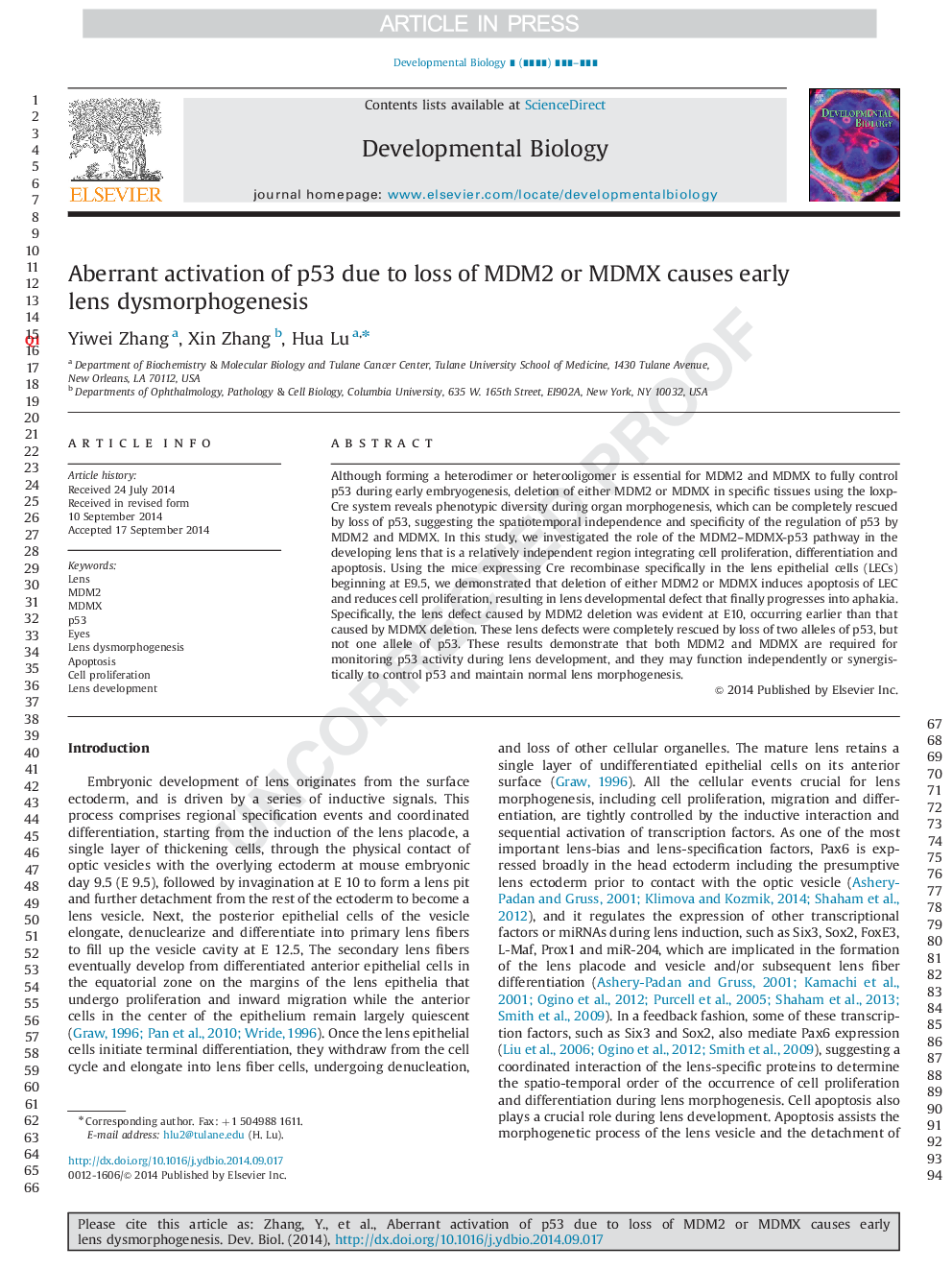| Article ID | Journal | Published Year | Pages | File Type |
|---|---|---|---|---|
| 10931706 | Developmental Biology | 2014 | 12 Pages |
Abstract
Although forming a heterodimer or heterooligomer is essential for MDM2 and MDMX to fully control p53 during early embryogenesis, deletion of either MDM2 or MDMX in specific tissues using the loxp-Cre system reveals phenotypic diversity during organ morphogenesis, which can be completely rescued by loss of p53, suggesting the spatiotemporal independence and specificity of the regulation of p53 by MDM2 and MDMX. In this study, we investigated the role of the MDM2-MDMX-p53 pathway in the developing lens that is a relatively independent region integrating cell proliferation, differentiation and apoptosis. Using the mice expressing Cre recombinase specifically in the lens epithelial cells (LECs) beginning at E9.5, we demonstrated that deletion of either MDM2 or MDMX induces apoptosis of LEC and reduces cell proliferation, resulting in lens developmental defect that finally progresses into aphakia. Specifically, the lens defect caused by MDM2 deletion was evident at E10, occurring earlier than that caused by MDMX deletion. These lens defects were completely rescued by loss of two alleles of p53, but not one allele of p53. These results demonstrate that both MDM2 and MDMX are required for monitoring p53 activity during lens development, and they may function independently or synergistically to control p53 and maintain normal lens morphogenesis.
Related Topics
Life Sciences
Biochemistry, Genetics and Molecular Biology
Cell Biology
Authors
Yiwei Zhang, Xin Zhang, Hua Lu,
